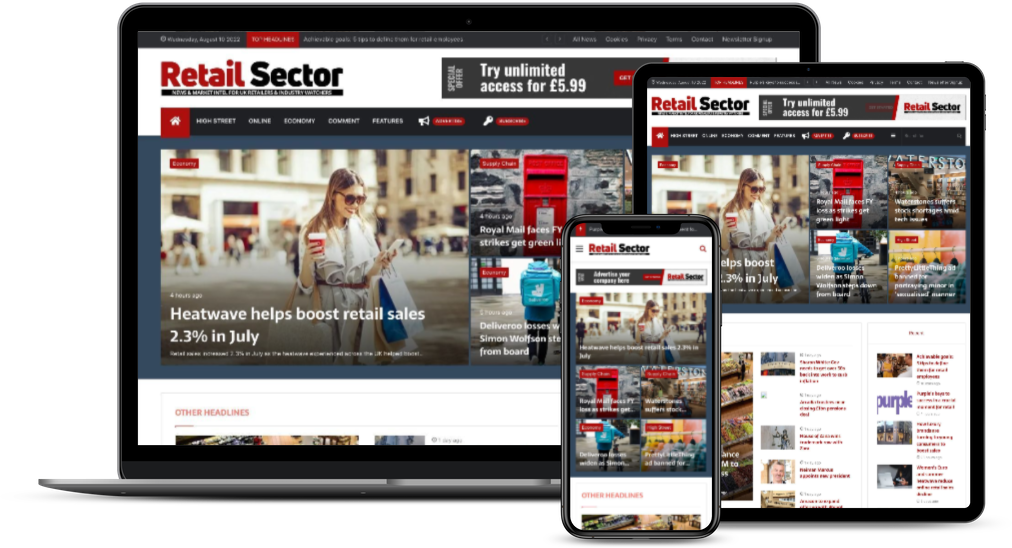
Global markets may well be rebounding after President Trump announced a “universal 10%” tax on all imports, except China which has now been hit with a 125% levy.
Although many who had anticipated a global economic crisis may feel a sense of relief today, the reality remains that the United States has implemented tariffs on imports at an unprecedented scale. Unlike previous adjustments, which lacked sufficient impact on consumer behaviour, these new measures signal a significant shift.
Interestingly, there has been little discussion about whether these additional costs will be passed on to consumers. Given that this is the most likely outcome, it will significantly influence purchasing behaviour not only in the U.S., but globally. It’s another challenge retailers will need to navigate in an already complex environment.
Another significant change, which has largely gone under the radar in mainstream media but is likely to have a major impact on retail, is the US’s review of its generous $800 allowance for small parcel imports. This exemption will be eliminated for Chinese-origin goods starting May 2, and is expected to be reduced or removed for non-Chinese goods in the coming months. Currently, over 90% of shipments entering the US benefit from the ‘de minimis’ threshold. These changes alone are anticipated to significantly increase the workload for US Customs and may result in delays in cross-border shipping.
So, with all the noise, where do you put your efforts? Here are my 5 key pieces of advice to navigate the changes and challenges ahead:
1. Be Clear and Upfront with Customers
I strongly recommend shipping with all duties included (DDP). Customers need transparency around costs—surprise charges will lead to increased returns. Communicate clearly about what’s included in the price and what’s not. Trust and clarity will be essential in maintaining customer satisfaction.
2. Stay on Top of Your Costs
Maintain close oversight of your international orders to the US. Regularly compare forecasted costs to actuals to protect your margins. Partner closely with your carrier and customs advisors—they’ll be key in helping you to understand, and to navigate, ongoing changes.
3. Prepare for Delays and Monitor Invoices
4. Develop Contingency Plans
Prepare Plans B, C, and D. The changes are coming thick and fast. While tariffs are currently paused at 10% for countries other than China, negotiations continue and I foresee more changes in the short-term. Let profitability drive your decisions. Understand your numbers and establish a clear, adaptable framework for responding to shifts. Effective scenario planning will ensure you remain ahead of the curve.
5. Be Nimble, Not Reactive
Being agile doesn’t mean reacting impulsively. Avoid making long-term decisions based solely on today’s conditions—consumer behavior will take time to adjust. Truly understanding the longer-term impact on US consumer behaviour will take time. Instead, focus on understanding which options make sense for your business. Define the metrics that matter, track them closely, and use that insight to inform future decisions.
The months ahead
In the face of these sweeping tariff changes and new customs regulations, the landscape for international trade is evolving rapidly. While the market may show signs of recovery following the 90-day pause, the underlying reality remains: these new measures are unprecedented in scale and likely to affect both consumer behaviour and the logistics of cross-border trade.
Retailers must be proactive in navigating these shifts by staying informed, transparent with customers, and prepared for potential delays. With the added complexity of the de minimis changes and the uncertainty of future adjustments, businesses that remain flexible, data-driven, and focused on profitability will be better positioned to thrive.
By embracing these strategies and developing contingency plans, you can manage these challenges effectively and stay ahead of the curve. As the situation continues to evolve, the key will be adaptability and a clear understanding of how these changes impact both your bottom line and your customers’ purchasing decisions.
Becky Lombardo, of Londra Consulting, has over 20 years’ experience managing global logistics and supply chains for big brands such as Harvey Nichols, Arcadia, Asos, Dunelm and Matchesfashion.



